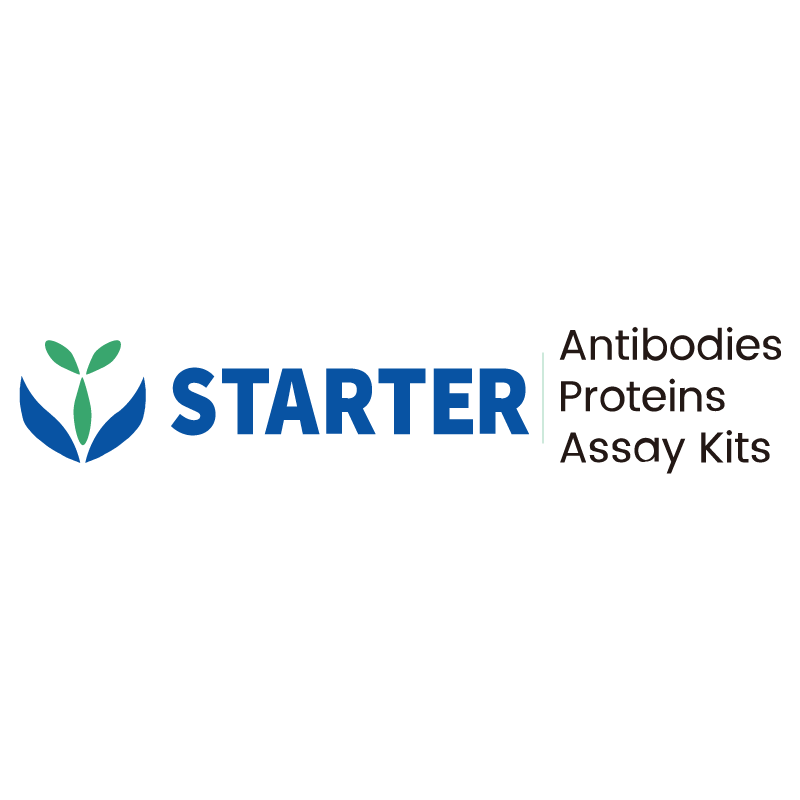WB result of OPN1SW Rabbit pAb
Primary antibody: OPN1SW Rabbit pAb at 1/1000 dilution
Lane 1: mouse liver lysate 20 µg
Lane 2: mouse eye lysate 20 µg
Negative control: mouse liver lysate
Secondary antibody: Goat Anti-rabbit IgG, (H+L), HRP conjugated at 1/10000 dilution
Predicted MW: 39 kDa
Observed MW: 40 kDa
Product Details
Product Details
Product Specification
| Host | Rabbit |
| Antigen | OPN1SW |
| Synonyms | Short-wave-sensitive opsin 1; Blue cone photoreceptor pigment; Blue-sensitive opsin (BOP); BCP |
| Immunogen | Synthetic Peptide |
| Location | Cell membrane, Cytoplasm |
| Accession | P03999 |
| Antibody Type | Polyclonal antibody |
| Isotype | IgG |
| Application | WB, IHC-P, IF |
| Reactivity | Hu, Ms, Rt |
| Positive Sample | Human retina, mouse retina, rat retina |
| Predicted Reactivity | Cz, Mk |
| Purification | Immunogen Affinity |
| Concentration | 0.5 mg/ml |
| Conjugation | Unconjugated |
| Physical Appearance | Liquid |
| Storage Buffer | PBS, 40% Glycerol, 0.05% BSA, 0.03% Proclin 300 |
| Stability & Storage | 12 months from date of receipt / reconstitution, -20 °C as supplied |
Dilution
| application | dilution | species |
| WB | 1:1000 | Ms, Rt |
| IHC-P | 1:500 | Hu, Ms, Rt |
| IF | 1:500 | Hu, Rt |
Background
OPN1SW, also known as short-wave-sensitive opsin 1 or blue-sensitive opsin, is a protein encoded by the OPN1SW gene in humans. This protein is a type of opsin pigment found in the photoreceptor cells of the retina and is crucial for normal color vision, specifically mediating the perception of blue light. It is a G-protein coupled receptor that initiates the visual transduction cascade by converting light into electrochemical signals. The OPN1SW gene is located on chromosome 7q32.1 and is conserved across several species. Defects in this gene can lead to tritan color blindness, a condition where individuals have impaired blue-yellow color vision.
Picture
Picture
Western Blot
WB result of OPN1SW Rabbit pAb
Primary antibody: OPN1SW Rabbit pAb at 1/1000 dilution
Lane 1: rat liver lysate 20 µg
Lane 2: rat eye lysate 20 µg
Negative control: rat liver lysate
Secondary antibody: Goat Anti-rabbit IgG, (H+L), HRP conjugated at 1/10000 dilution
Predicted MW: 39 kDa
Observed MW: 40 kDa
Immunohistochemistry
IHC shows positive staining in paraffin-embedded human retina. Anti-OPN1SW antibody was used at 1/500 dilution, followed by a HRP Polymer for Mouse & Rabbit IgG (ready to use). Counterstained with hematoxylin. Heat mediated antigen retrieval with Tris/EDTA buffer pH9.0 was performed before commencing with IHC staining protocol.
IHC shows positive staining in paraffin-embedded mouse retina. Anti-OPN1SW antibody was used at 1/500 dilution, followed by a HRP Polymer for Mouse & Rabbit IgG (ready to use). Counterstained with hematoxylin. Heat mediated antigen retrieval with Tris/EDTA buffer pH9.0 was performed before commencing with IHC staining protocol.
Immunofluorescence
IF shows positive staining in paraffin-embedded human retina. Anti- OPN1SW antibody was used at 1/500 dilution (Green) and incubated overnight at 4°C. Goat polyclonal Antibody to Rabbit IgG - H&L (Alexa Fluor® 488) was used as secondary antibody at 1/1000 dilution. Counterstained with DAPI (Blue). Heat mediated antigen retrieval with EDTA buffer pH9.0 was performed before commencing with IF staining protocol.
IF shows positive staining in paraffin-embedded rat retina. Anti- OPN1SW antibody was used at 1/500 dilution (Green) and incubated overnight at 4°C. Goat polyclonal Antibody to Rabbit IgG - H&L (Alexa Fluor® 488) was used as secondary antibody at 1/1000 dilution. Counterstained with DAPI (Blue). Heat mediated antigen retrieval with EDTA buffer pH9.0 was performed before commencing with IF staining protocol.


